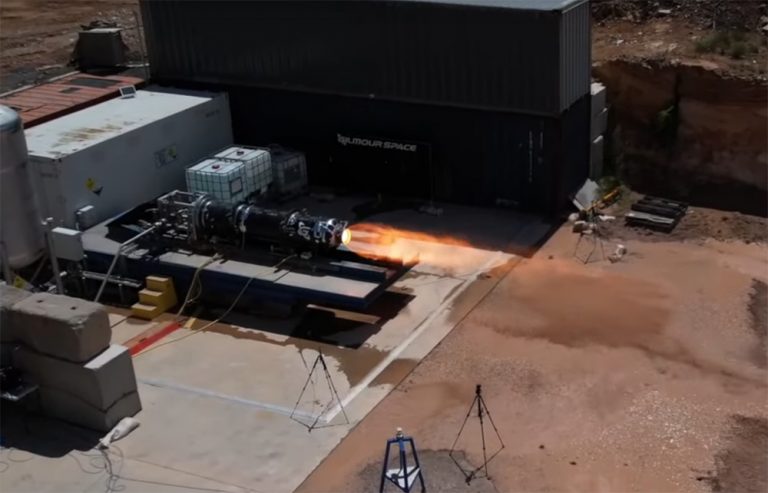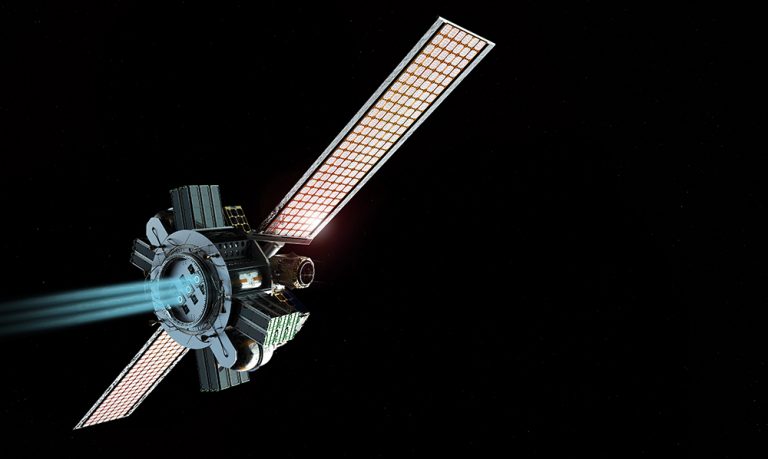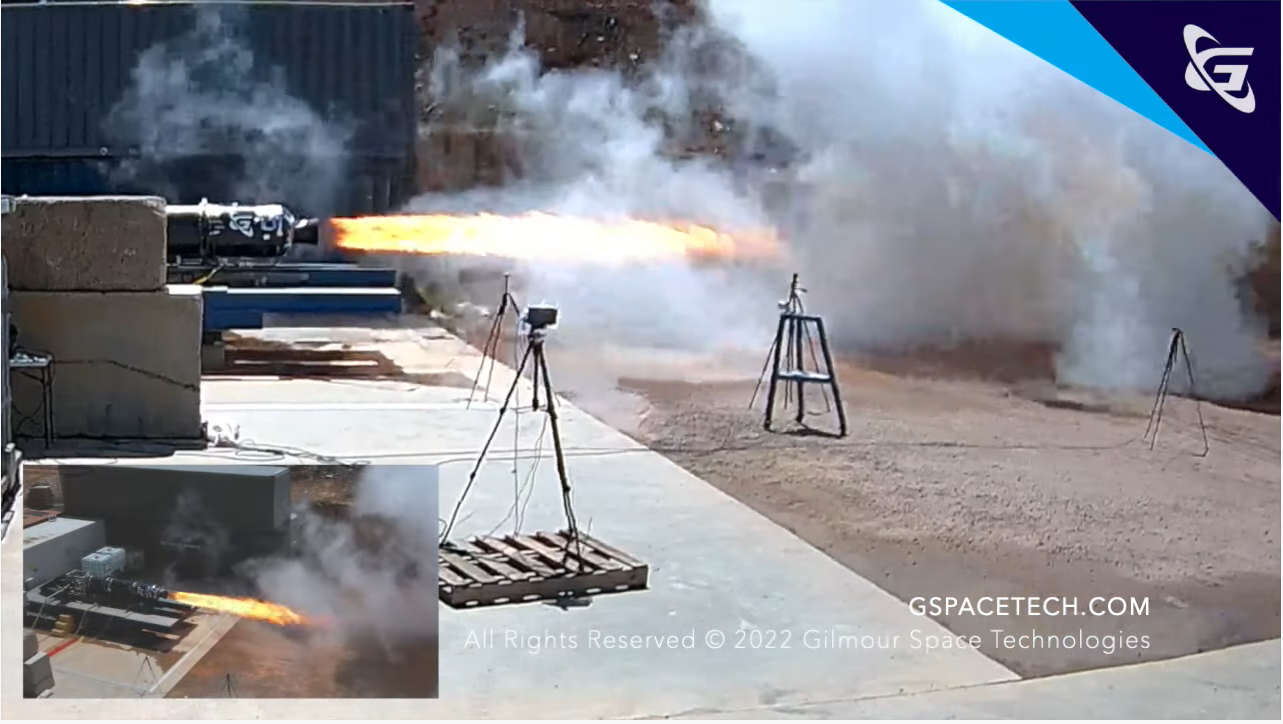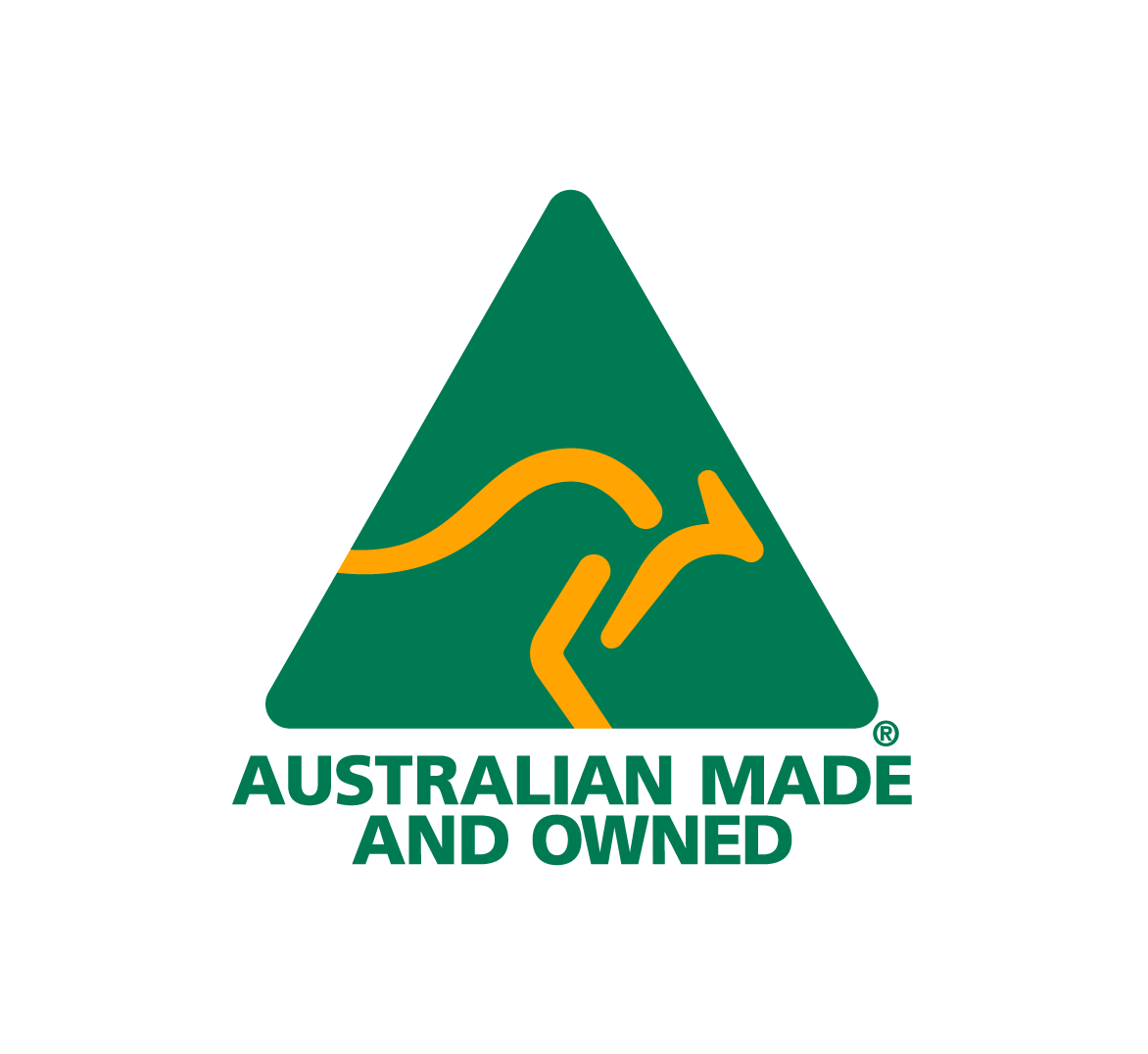Queensland-based launch company Gilmour Space Technologies have successfully taken the next step towards space with the test-fire of their 110-kilonewton rocket engine, believed to be the largest rocket engine ever developed by an Australian-owned Small to Medium Enterprise.
With plans to launch their first Eris rocket into space this year, Gilmour Space Technologies has taken a massive step towards this goal, by successfully testing the engine that will power the first and second stages. The test, which lasted 75 seconds, was Gilmour’s longest to date and delivered just over 110 kilonewtons of thrust, enough to lift four SUVs off the ground.
“It was a successful test. We achieved our expected full thrust of 110 kilonewtons (or 25,000 pounds-force) over the 75 seconds, and our team will be moving on to the final engine qualification campaign next month,” said Gilmour Space Technologies CEO, Adam Gilmour.
The length of the test was important, as it showed the engine could potentially run for durations sufficient to take the rocket to the altitude required to achieve orbital flight. With the successful test completed, the company hopes to move onto the final qualification campaign for the engine next month, which will include a 110-second test, replicating the full mission duration. It is hoped that the successful launch of the Eris rocket later this year will help Australia become only the 11th country in the world to have its own sovereign launch capability.
AUSTRALIA’S HYBRID ROCKET

Gilmour’s Eris rocket uses a specially developed hybrid fuel system that is not only cheaper than traditional liquid or solid fuel but it is also safer. Traditionally, however, hybrid fuels have not been able to meet the performance levels of those other fuels types, but Gilmour believes they have solved this problem.
They have developed a type of fuel that can be 3D printed, meaning the fuel can be tailored to burn at a specific rate. The Eris rocket would be the first to use this in house developed 3D printed hybrid fuel technology to reach orbit, should it be successfully launched later this year. It is clear that it is not only Gilmour who is excited by this prospect, as the funding they secured mid last year testifies.
Strategically, the test was also a demonstration of Australia’s first sovereign launch capability when it comes to larger payload capacity vehicles. “It is no small thing to say that we’ve developed Australia’s largest rocket engine; and that it could have significant flow-on benefits for the commercial, civil and defence space sectors,” added Mr Gilmour.
January seems to be the best time for Gilmour to test their engines, having completed a similar test of a 90 kilonewton engine this time last year. This latest test marks a major milestone for Gilmour Space, which is developing Australian-made rockets, with future plans to be capable of launching 300 to 4,000-kilogram satellites and payloads into low earth and other orbits.
A BOOMING MARKET PLACE

There is already significant interest in Gilmour’s Eris launch vehicle with a number of customers already signed up for the first launch planned for later this year. One of those customers, Space Machines Company, plans to demonstrate their space tug, Optimus, having been the first customer to sign with Gilmour in 2020. It is hoped that the Optimus platform will also support a number of other technologies, including Fireball International, who plan to use the tug for their own demonstrator fire detection satellite.
On where and when Eris will be launched, Mr Gilmour said the company was currently seeking approvals from state and federal government agencies to green-light a small orbital spaceport at the Abbot Point State Development Area in Bowen, North Queensland.
“With timely assessments and approvals from relevant authorities, we hope to be able to launch Australia’s first sovereign-made rocket from Queensland sometime in the latter half of 2022,” he concluded.
by Ruth Harrison
18 Jan 2022

